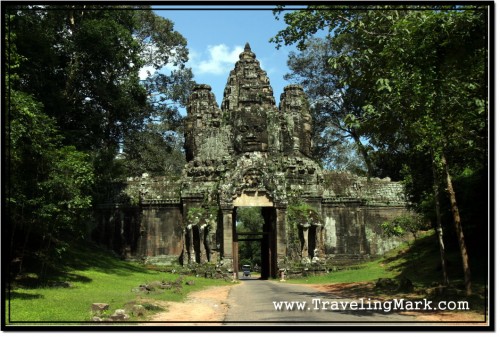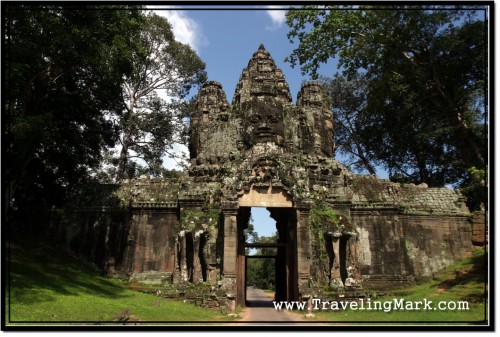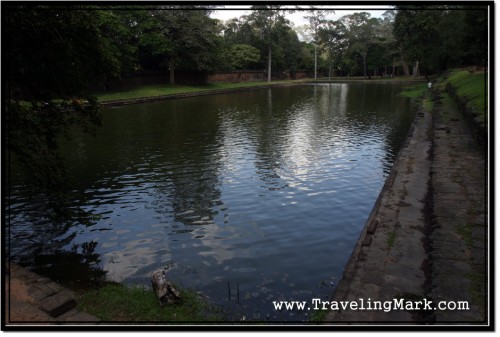When Jayavarman VII built Angkor Thom, he made sure it’s well fortified but physical fortification was only part of the city’s strenght. Angkor Thom was also built to be protected by divine powers. There is deep symbolism in much of Angkor Thom’s architecture – let’s take a look at its most significant features:
Similar to the symbolism of Angkor Wat, the world Angkor Thom represents is enclosed within the rock wall that’s 8 meters (26 feet) tall beyond which there is the great ocean symbolized by the surrounding moat. 54 deities and 54 demons guarding each entrance to Angkor Thom represent 108 protectors of the city – the sacred number linked to the Churning of the Ocean of Milk.
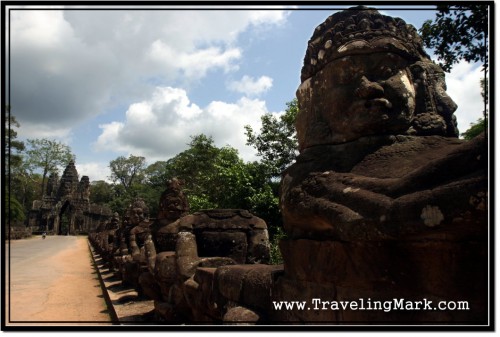
Nagas – multi-headed serpents held firmly by a row of 54 guardians on each side of the causeway leading to the gate across the moat represent serpent Vasuki from Hindu mythology. The serpents are ready to spit poison at the enemy out of each of their seven heads and have their tails erect to terminate all those who still make it through. With their seven heads, Nagas also serve as Khmer symbols of rainbow – the bridge between heaven and earth, between the world of the gods and the world of men.
To help keep watch over the city, Jayavarman VII crowned top of the city gates and the many towers of the state temple Bayon with faces of Lokeshvara. His compassionate, but attentive faces bearing the features of the king himself keep close watch over the city of Angkor Thom in all the directions.
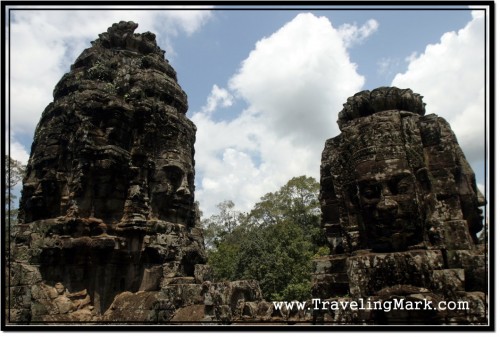
Angkor Thom was taken over by sacking Chams in 1177 but the immortal city of Yashodhara was reclaimed for Khmer people by king Jayavarman VII in 1181. The king then built the wall and moat around it the fortification and symbolism of which proved so solid, future Khmer kings stayed in the city and remodelled Bayon, instead of building their own royal cities and state temples.
